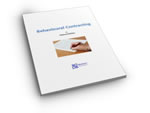 Most coaches find initial or more commonly termed ‘chemistry meetings’ a challenge, especially as most training providers do not cover this aspect of our work.
Most coaches find initial or more commonly termed ‘chemistry meetings’ a challenge, especially as most training providers do not cover this aspect of our work.
Success in converting clients has three elements to it. The first is clarity about what you believe coaching is, the way you work, and how you add value to individuals and organizations. This is not about presenting an academic case but a heartfelt and true representation of who you are, what you do and with what type of clients. When you first meet your client it helps to check out what the client knows about coaching and if they have had coaching before. You can then ask the client whether it would be helpful to position what coaching is and how your coaching programme works or whether the client would like to start by outlining what s/he is looking for from you. Even if the person has had coaching before it is still worth describing your approach as it could be different.
In most cases individuals will ask you to start. If they do, you need to get comfortable with what you believe is important to say and get across. For example, details regarding confidentiality, frequency, length and session timings, your availability between sessions, liaison with the individual’s manager, reviews, whether feedback is to be given to the organization and if so how, what type, to whom and when. In addition, outlining your individual responsibilities with statements such as “you are the expert on you and I offer you my expertise so we can collaboratively work on those aspects that will add value to you”, are important in setting boundaries and expectations. This together with your personal take on how you work provides the client with the basic structure of what coaching with you would look like.
The second element is finding out about client needs and desired outcomes. During this part of the process, use your coaching skills to provide a taste of how you work and what a coaching session might feel like if they decided to work with you. For example, “it sounds as if it would be helpful to consider your personal brand within the organization and how you could communicate with your colleagues in the same way you do so successfully with your external clients”. By listening, shaping, reflecting back and naming aspects to be worked on and providing coaching around such topics, it helps the client clarify his or her own needs as well as providing a way of evaluating working with you.
The third element is to have a range of examples of previous clients, the challenges they faced and how you helped. This gives life to what you do and clients may ask you what type of clients and client issues you have worked with so having examples ready to call upon is useful. Examples give you the opportunity of showing the diversity of your offering.
It is helpful to write down the above and practice what you want to say so you become relaxed and familiar with the points you believe are important to get across. Chemistry meetings are a two way process, just as the client is assessing you, you are assessing whether you want to or can work with the client. Therefore, it is useful when rounding off your chemistry meeting to provide a summary of your understanding of the client’s needs, ask whether there are any additional questions and let the client know you would like to work with him or her. People like to know you like them so making this explicit is good relationship building and also allows you to send a follow up email to your initial meeting.
It is helpful during chemistry meetings to think about what you could send to the client in the way of articles or exercises as a way of demonstrating your commitment to the individual. A statement such as, “would it be helpful if I sent you an article on xxx?” gets the client thinking that even though s/he has a choice of coach, you are still prepared to assist in the moment and go the extra mile.
To cover all of the above you will need to ensure that your chemistry meetings is between 45 minutes to an hour.
Chemistry meetings are as much about you developing a model or structure of what your process as it is about listening to your potential new client.






